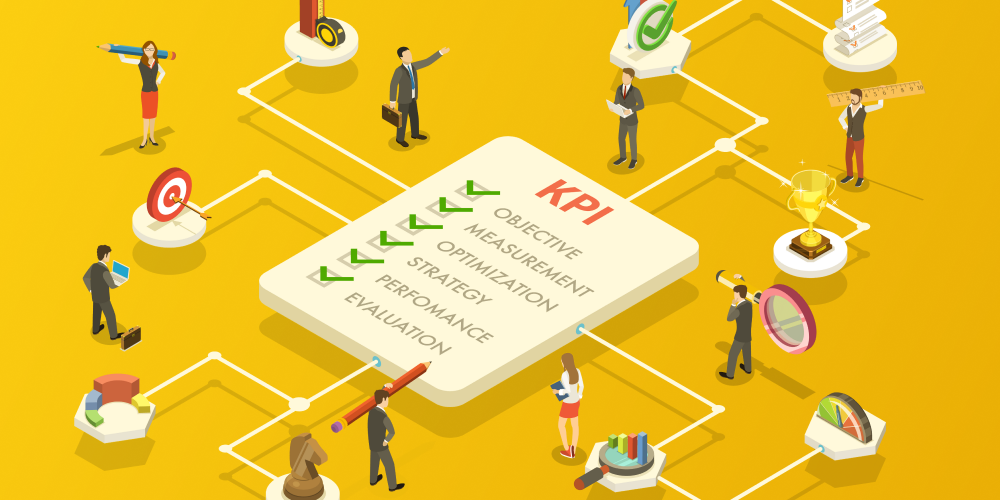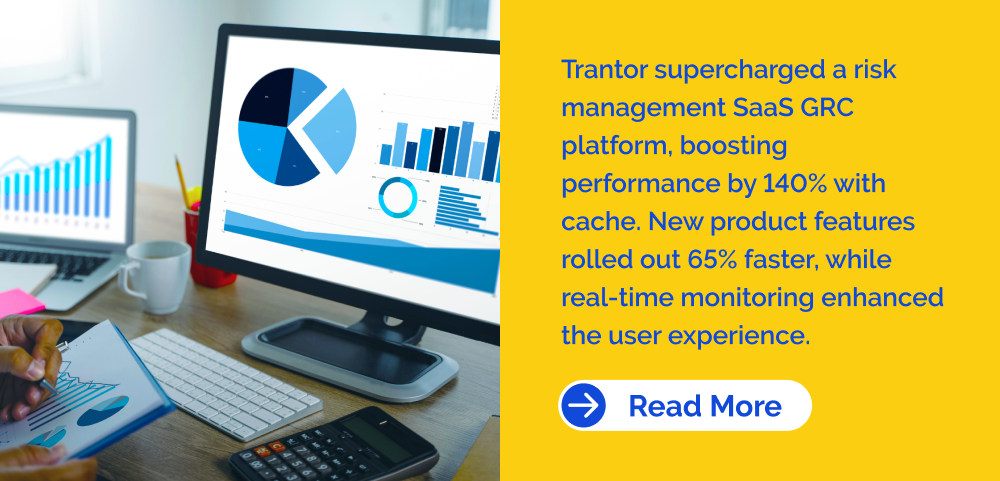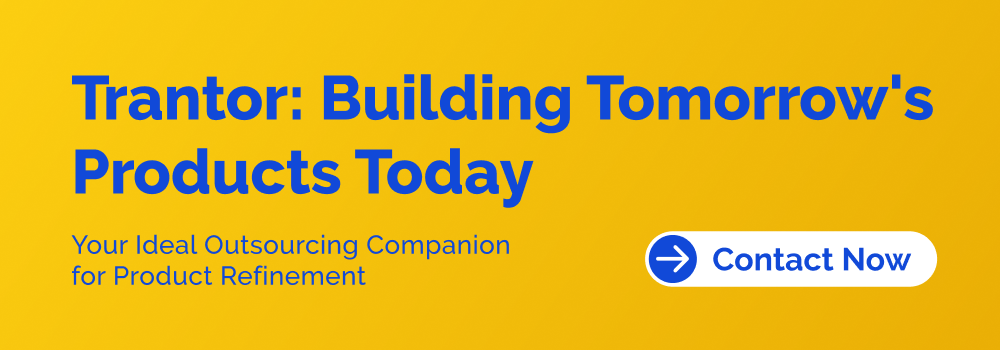Software Product Development, zBlog
How to Build a Minimum Viable Product (MVP): A Step by Step Guide
trantorindia | Updated: September 7, 2023

Introduction
Launching a new product is always a risky endeavor. According to CB Insights, 42% of startups fail because they build something no one wants. An Minimum Viable Product allows you to validate your product idea early on and make adjustments before committing to a full launch.
MVPs have become a popular way for many startups and entrepreneurs to launch their products and ideas quickly and start the process of learning as early as possible. Launching an MVP can essentially conduct a live experiment to test whether your product and business idea will gain customer traction.
Here are some key statistics on MVP development:
- Startups that use an MVP methodology are 30% more likely to succeed (CB Insights)
- MVPs can reduce development costs by up to 50% compared to building a complete product first (GoodFirms)
- MVPs can reduce time to market by 25% on average (Harvard Business Review)
- Startups that scale properly grow 20 times faster than those that scale prematurely with a fully built-out product (Startup Genome Report)
This comprehensive guide will review the essential steps and considerations when building a successful MVP.
What Exactly is a Minimum Viable Product (MVP)?

A minimum viable product is a version of your product that enables you to collect the maximum amount of validated learning about your customers with the least effort. It focuses on having just enough core features to deploy the product while effectively removing unnecessary functionality.
The primary goal of an MVP is to test fundamental business hypotheses and assumptions. It allows you to validate whether your product will provide value to customers before investing significant time and money into full development.
Some common hypotheses and assumptions that an MVP can validate include:
- Identifying whether the perceived problem is a real pain point for potential customers
- Determining if your proposed solution effectively alleviates that pain point
- Assessing the functionality that is core vs. nice-to-have
- Evaluating whether the product can sustainably acquire customers organically
- Testing whether customers find the product sufficiently easy to use
- Estimating the revenue potential and unit economics of the product
- Understanding how customers will interact with the product
By starting with an MVP, you can gather these valuable insights without entirely building out every planned feature of your product. The learnings generated by the MVP can then inform the future stages of development, ensuring you build something customers want.
Essentially, an MVP aims to answer the question:
“What is the minimum product version we can launch to validate our key assumptions?”
Some common characteristics of effective MVPs include:
- Focused on the core, must-have product features
- Offer a stripped-down user experience, avoiding bells and whistles
- Have just enough content and information for users to interact with the product successfully
- Require the minimum time and effort to build
- Flexible and able to iterate quickly based on user feedback
The exact features and functionality included in an MVP will vary based on the product type, industry, customer needs, go-to-market strategy, and available resources. The key is to thoughtfully determine the most minor possible version you can launch to start extracting learnings as soon as possible.
The Benefits of Building an MVP
Several advantages make the MVP model appealing to many startups and entrepreneurs:
- Validation of your business idea – The ultimate benefit of an MVP is validating your idea’s viability early on. Testing an MVP with real customers can demonstrate whether your hypothesis about a target market and customer need is correct. This validation gives you evidence that your product and business have potential before sinking substantial time and money into the venture.
- Early customer feedback – By putting a simplified product in front of customers, you can gather feedback on features, messaging, pricing, competitive positioning, and other aspects. Incorporating this feedback into future iterations can significantly improve your product-market fit.
- Faster time to market – Developing an elaborate minimum viable product is much faster than building a full-featured product. You can take a product to market quickly, enabling you to generate traction with customers sooner.
- Cost and effort minimization – An MVP requires significantly fewer development resources than a full-scale product. It allows you to conserve funding, narrow your focus, and scale up the product after achieving core milestones.
- Measuring KPIs and metrics-A launched MVP enables you to start measuring the key metrics that will make or break your product, like customer acquisition costs, conversion rates, churn, lifetime value, and more. Tracking KPIs provides data-driven insights into your product’s performance and potential.
- Agile development methodology – The build-measure-learn feedback loop inherent in the MVP process aligns well with agile product development. An MVP supports iterative cycles of shipping new product features and enhancements based on customer data.
- Securing investor funding –By demonstrating traction and market potential with your MVP, you can more easily attract investor funding. Rather than betting on an unproven idea, investors can see evidence of viability.
- Strategic focus – Eliminating unnecessary features forces your team to identify the functionality vital to your product offering. This constraint leads to an enhanced focus on the capabilities that will differentiate your solution and drive adoption.
- Risk mitigation –Launching an MVP significantly reduces the risks associated with product development. By testing your hypothesis early with a smaller launch, you avoid having to build an entire product that may ultimately flop at scale.
Common Myths and Misconceptions About MVPs
Despite the many benefits, there are also some common misconceptions people have about minimum viable products:
- Myth: MVPs are low-quality products – An MVP is sometimes low quality. While it isn’t a polished product, it should have enough quality and utility to demonstrate its potential and solicit helpful feedback.
- Myth: MVPs are built quickly and cheaply – While faster and cheaper than full product development, building an effective MVP still requires quality design, engineering, and testing work. It is sometimes quick or dirty.
- Myth: All successful products start as MVPs – Some products that seem like overnight successes take years of development. While MVPs can accelerate success, they aren’t required for every product.
- Myth: Our MVP has to impress investors – Your MVP’s primary goal is learning, not impressing investors. Some investor demos require more polish but generally focus on extracting insights first.
- Myth: An MVP should only take a few weeks to build – The timeline depends heavily on your product’s complexity. While some MVPs take just weeks, it is common for an MVP to take several months to build and test properly.
- Myth: Our MVP needs to make money on day one – Revenue generation can be a goal, but it isn’t required on day one. Focus first on testing hypotheses and achieving product-market fit before optimizing for profits.
- Myth: We can keep our MVP the same after we launch – The benefit of an MVP is you can iterate constantly based on user feedback. Stay focused on your first launched version. Allow your MVP to evolve.
How to Build a Minimum Viable Product (Step-by-Step Process)
Now that we’ve covered the core concepts, let’s dive into the step-by-step process for building your minimum viable product.
Step 1: Identify the Problem You Want to Solve

The first step is clearly defining the problem you are trying to solve. This involves understanding your target customers and their needs.
Conduct thorough market research both about your industry and directly with your target customers. Learn about the current solutions they use and where those solutions fall short. Pinpoint the unsolved pain points that offer an opportunity for your product.
Analyze your competitors and assess where the gaps exist that your product could fill.
You want to confirm that the problem you aim to solve is an acute pain point for potential customers. The last thing you want is to build an MVP for a problem that doesn’t exist.
Some key questions to ask when identifying your target problem:
- Who are we building this product for?
- Does our target customer segment have a real, pressing problem?
- Is this problem currently unsolved or under-served?
- How are customers dealing with this problem today?
- How would solving this problem benefit the target customers?
- Would the target customers buy a product that solves this problem?
- What functionality is needed to solve the problem adequately?
This discovery process takes time but is crucial. According to CB Insights, 42% of startups fail because they build something no one wants. So, do the legwork upfront to ensure you are solving a real pain point.
Step 2: Define Your Target Customer

Once you’ve identified a compelling problem to solve, the next step is to define who your target customers are precisely.
Compile detailed buyer personas of precisely who your customer segments are. Include relevant details like:
- Demographic information (e.g., age, gender, income, location, education level)
- Job roles and responsibilities
- Goals and challenges they face
- What solutions do they currently use
- Where current solutions fail them or cause friction
- How they look for solutions and make purchasing decisions
- What content and information do they seek out
You want your MVP to resonate with a well-defined audience from the start. Otherwise, you can avoid creating something too broad that fails to solve your core users’ needs effectively.
Dig into understanding the characteristics of your best-fit customers who will get the most value from your offering. Get as much clarity as possible about the archetype of users who will benefit most from your solution.
This clear understanding of your target customers will inform every aspect of your MVP, from the branding and messaging to the feature set needed for the product.
Step 3: Define Your MVP Goals and Success Metrics

Now that the target problem and audience are clearly defined, you need to establish goals for your MVP. Ask yourself:
- What are we looking to learn or validate with this MVP?
- How will we determine if our MVP is successful?
- What key assumptions do we need to test?
You need to identify what “success” looks like for your minimum viable product. This means establishing clear success metrics you can measure once the MVP is live.
Some examples of potential MVP success metrics include:
- Landing page conversion rate
- Customer acquisition cost
- Percentage of active users
- Churn rate
- Customer lifetime value
- Customer satisfaction (NPS score)
- Revenue targets
- Cost per acquisition
- Time to purchase
The specific metrics will vary based on your product, industry, and objectives. But you must determine them upfront to build analytics into your MVP and track performance.
With clearly defined goals and success metrics, you can determine whether your MVP effectively proves or disproves your hypothesis.
Step 4: Prioritize Your MVP Features

One of the hallmarks of a quality minimum viable product is intense prioritization of the cut features. Add only what is essential for launch.
Compile a list of all the possible features and functionality you may want to include in the product eventually. Then, ruthlessly cut this list to just the bare essentials for your MVP.
The prioritization framework MoSCoW is helpful for MVPs:
- Must-Have: Critical features without which the product won’t function
- Should Have: Important features that add significant value but aren’t strictly necessary
- Could Have: Nice-to-have features that can wait until later
- Won’t Have: Non-essential features to cut from the MVP
You want to focus as much as possible on the “Must Have” and “Should Have” capabilities. Discipline is required to cut unnecessary features, but the more you trim down, the faster you can launch your MVP.
Remember, anything you don’t include in the initial launch can always be added after validated learnings. But don’t clutter your MVP with features that won’t cut the first iteration.
Step 5: Choose Your MVP Development Approach

There are a few core methods you can consider when building your minimum viable product:
- Landing Page MVP
A landing page MVP consists of just an essential one-page website with summaries of your product features and benefits. Visitors can take actions like signing up, pre-ordering, or requesting a demo. You can gauge interest with a functional product still being built. - Explainer Video MVP
An explainer video can demonstrate your product value proposition and features before you build the actual working software. These videos portray how the product will work once fully built. - Wizard of Oz MVP
They are also known as a smoke test MVP. With this approach, you manually mimic your product’s core functionality behind the scenes. Users believe they are interacting with a tangible product, but it’s being operated manually by your team. - Concierge/Manual MVP
Like Wizard of Oz, you deliver the product service manually instead of with technology. You provide a custom experience to each customer tailored to their needs. It requires more effort but gives valuable learnings. - Piecemeal MVP
You build a subset of the core features but in a way that still offers standalone value. Additional functionality can then be added incrementally to reach the full product vision. - Product Shell MVP
Creates a shell of the core product experience and user interface without the back-end functionality built out. It allows you to test usability and get feedback on the design. - Pitch MVP
Create the specifications, wireframes, or prototypes to demonstrate your product vision. Essentially, it is “selling” the product without building it yet.
Your option depends on your product concept, resources available, target audience, time constraints, and objectives. Most commonly, startups use a landing page, explainer video, concierge, or piecemeal MVP approaches.
Step 6: Design and Build your MVP

Once you’ve aligned on the features to include and the MVP approach, it’s time to design and develop your minimum viable product.
Keep the user experience at the core and build just enough to validate your hypothesis. Polish and refinements come later. Focus on simplicity and “just good enough” for the MVP.
Wireframing and prototyping are very useful for developing a web/mobile app. Figure out exactly how users navigate the product and take critical actions.
Prioritize rapid development practices like agile development to accelerate your time to market. The faster you launch your MVP, the quicker you can get feedback.
Ensure you build the necessary analytics to measure your defined success metrics from the start. Understanding performance data and trends will be crucial to making future product decisions
Also, ensure your MVP has mechanisms to collect direct customer feedback, like in-app surveys, NPS prompts, etc. Combine this qualitative data with quantitative analytics.
It can be tempting to pile on more features as you go. But resist this urge in the interest of speed and simplicity. Only build what your MVP requires at this phase.
Test rigorously before launch to catch usability issues, bugs, and edge cases. You want a high-quality, polished experience within the feature constraints.
Step 7: Launch Your MVP

Once built, it’s time to get your MVP out there. You aim to get potential users to interact with the product to provide feedback.
First, reach out to a small, controlled group of “early evangelist” customers in your target segment. Get their hands on the MVP to road-test it.
Then, expand to a broader audience that fits your buyer personas. There are a few strategies to consider for getting the word out:
- Email outreach to prospective customers
- Social media campaigns and ads
- Digital ads (search, display, etc)
- Conference panels and events
- Email lists and newsletters
- Industry publications
- Affiliate partnerships
- PR outreach
The distribution strategy depends on your product and target customers. Often, a mix of tactics is used.
The goal is to drive qualified traffic to your MVP launch. You may release it as a private beta launch before opening up more widely.
Step 8: Gather Feedback and Validate Learnings

This is the most crucial step of the entire process. Once your MVP is launched, it’s time to collect feedback and data to validate your hypotheses:
- Look at usage analytics to see how customers interact with your MVP. What features do they use? Where do they drop off? What actions do they take repeatedly?
- Conduct user surveys to gather direct qualitative feedback. Get input on the user experience, value delivered, missing features, bugs encountered, etc.
- Reach out directly to engaged users and customers via interviews and focus groups—probe for more detailed insights.
- Monitor social channels to see feedback that users are sharing publicly about your offering.
- Track your success metrics to quantify performance in conversions, activation, retention, revenue, etc.
Take time to absorb the feedback and data from all sources. Look for trends and significant customer insights.
Analyze what worked well and what didn’t. Assess which features customers find most valuable and where they are struggling.
This information is precious as you look to iterate on your MVP product.
Step 9: Iterate Quickly Based on Learnings

Armed with feedback and data, start applying those insights to improve your minimum viable product.
If certain features proved unnecessary, cut them. If specific actions were complex for users, simplify those flows.
Use direct customer quotes and feedback to fuel your product roadmap and next round of development.
Rapid iteration is critical to the MVP process. Release updates and enhancements early and often based on your latest data.
Monitor the metrics and KPIs to confirm your changes’ desired impact. You’re on the right track if the success metrics start trending positive.
Also, continue engaging customers to guide the iterative development. Use their real-world insights to prioritize the refinements that add the most value.
The cycle of launching, gathering feedback, and iterating is core to developing a product customers genuinely want.
When is Your MVP Ready to Evolve?
20 comprehensive points on when an MVP has accomplished its core purpose:
- You have validated there is sufficient demand for your product. You are acquiring users at an acceptable rate and cost.
- Users clearly understand and resonate with your product’s core value proposition. They “get” the problem you are solving.
- Your key assumptions and hypotheses around customer needs have been effectively validated or invalidated. You have clarity on achieving product-market fit.
- Customers find your MVP sufficiently easy and intuitive to use. You’ve minimized friction in the user experience.
- Your MVP has proven to solve the core customer problem you aimed to address adequately.
- You are seeing positive trends in user engagement and retention metrics early on.
- Your defined success metrics and key performance indicators are trending in the right direction.
- The cost to acquire customers aligns with your unit economics model. Your CAC/LTV metrics are sustainable.
- Customers derive real value from your MVP, even with limited features.
- You have received constructive qualitative feedback to improve upon for the next iteration.
- Technical risks and challenges have been addressed sufficiently at the MVP stage.
- Your MVP has given you sufficient market and product validation to move forward confidently.
- You have tested your riskiest hypotheses first to validate your business model.
- No significant gaps reported by users would prevent adoption and retention.
- Your MVP includes the minimum features required to satisfy early adopters.
- You have gathered enough customer insights to build out your product roadmap.
- Your MVP proves customers will purchase your solution once it is fully developed.
- You can demonstrate to investors and stakeholders that customers want your product.
- Your success metrics indicate clear potential for scaling up your user base.
- The MVP feedback loop is working and driving ongoing refinement of your product.
Your MVP has done its job once you have confirmed your assumptions, validated product-market fit, and have evidence your product has merit worth pursuing further. This signals it is time to start evolving the MVP’s minimal feature set with the core fundamentals proven.
Common Challenges to Overcome

While highly beneficial, launching an MVP does present some common challenges to overcome:
- Getting Stuck in MVP Mode – Some companies must move beyond their initial MVP, leaving them stuck with an overly essential product. Ensure you use the MVP to validate your assumptions quickly, then be ready to execute the subsequent phases of your product roadmap.
- No Clear Metrics for Validation – You need clear success metrics to track and quantify whether your MVP proves your hypotheses. Define these upfront and implement the analytics required to measure them.
- Creating Too Large of an MVP – Don’t stray from a minimum viable product’s “minimum” aspect. Limit yourself to just crucial features, or you will defeat the purpose of rapid validation.
- Not Testing Your Riskiest Assumptions – Prioritize testing the assumptions and hypotheses that carry the most risk as early as possible. Don’t avoid exposing your riskiest guesses first.
- Ignoring Negative Feedback – Don’t just focus on the positive feedback and metrics. Listen carefully to negative feedback and constructive criticism to improve your offering.
- No Process for Gathering Feedback – Actively solicit customer feedback through surveys, interviews, social monitoring, NPS, etc. Don’t just passively wait for it to come.
- No Clear Decision Framework – Determine how you will assess if your MVP is a success or failure. Define a clear decision framework tied to your KPIs.
Transitioning from MVP to Full Product
Once you’ve validated your MVP, it’s time to move from a minimum viable product to a full-scale product. This involves:
- Using feedback and data to inform your product roadmap and features backlog
- Securing financing/investment to fuel product expansion
- Growing your team to align with the stages of product growth
- Continuing to enhance quality as you scale up your product
- Expanding your marketing to ramp up the acquisition of your target segments
- Optimizing pricing and positioning as you move beyond early adopters
- Doubling down on the product capabilities and messaging that resonated most
- Identifying new customer segments and use cases to expand your addressable market
- Monitoring metrics closely to spot issues early as your product and user base grows
- Executing faster iteration cycles to keep enhancing the product experience
Even after you launch a complete product, keep the build-measure-learn feedback loop. However, evolving from MVP provides a path to broader growth and impact.

The Importance of Perseverance
Launching an MVP can be a frustrating process at times. You will likely encounter issues and may see disappointing initial metrics.
MVPs help minimize risks but don’t eliminate them. Only some hypotheses will be validated.
Build flexibility into your plans and timelines. Be ready to adapt and even fully pivot based on learnings if needed.
Don’t get discouraged by early failures. Theastinups require persistence through an ongoing process of trial and error. But the learnings generated reduce uncertainty and boost your odds of finding success.
Remember that many hugely successful startups pivoted several times before landing on the right product or business model. Stay nimble and keep evolving.
Key Takeaways and Benefits
- MVPs enable validating your riskiest assumptions quickly with lower costs
- Focus on the most miniature feature set needed to test your hypothesis
- Work to identify your target customers and their needs
- Prioritize ruthlessly – remove all nonessential features and clutter
- Choose a development approach that supports rapid iteration and learning
- Ensure you can quantify and measure indicators of product-market fit
- Launch and gather feedback quickly, then be ready to pivot as needed
- Allow your product to evolve iteratively based on user data and insights
- An MVP can minimize wasted effort by failing fast and learning fast
Approaching new product development with a minimum viable product mindset will help maximize your learning while minimizing risks. You give yourself the best chance to refine a robust product-market fit.
Conclusion
While an MVP requires cutting scope, it allows you first to nail the core essentials. That strong foundation can then support adding more advanced functionality over time. What matters most is learning quickly at the start of your journey to build something people want. Following the MVP process outlined in this guide will help you get there.
With over a decade of IT expertise, Trantor delivers secure, stable, and scalable product development services that prioritize swift market entry. Our seasoned development teams possess a deep understanding of the challenges inherent in creating cutting-edge products. They place a strong emphasis on functionality while upholding the highest standards in code quality, design, and user experience.
As a dynamic digital product development firm, our commitment to delivering top-notch software product development services remains unwavering. We champion a collaborative approach throughout the various phases of development. Our dedicated experts are driven to generate innovative concepts, comprehend customer expectations, and readily adapt to emerging architectures and technologies to ensure optimal results.




